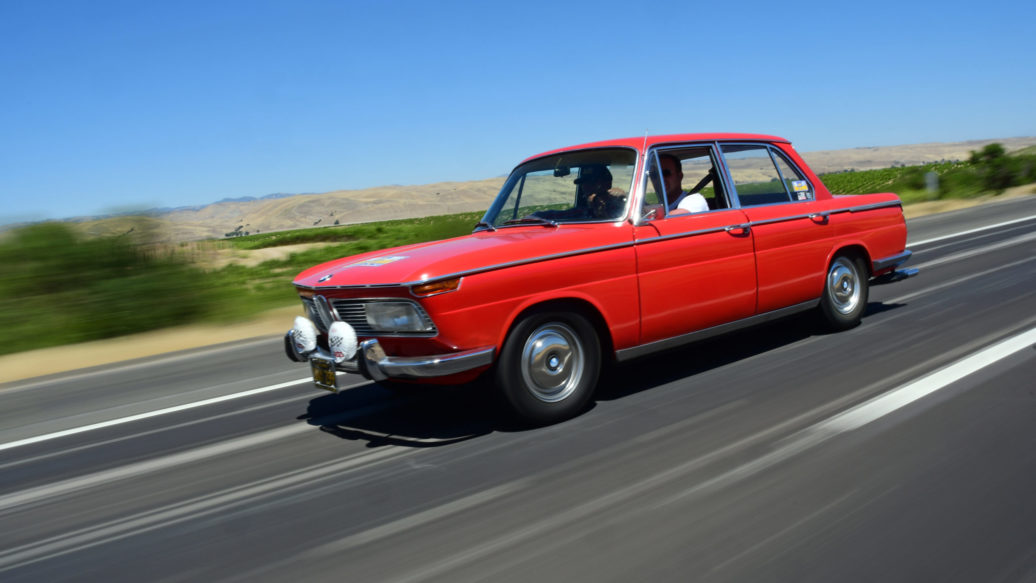They say that if you don’t look back at your car when walking away from it, you have the wrong car. Well, if we like looking at our cars as we walk away, what about as we drive them? Enter the rolling shot—or roller, as they are called. Shooting rollers is not new; for decades, the pages of our favorite automotive magazines have been the primary domain for those page-popping rolling shots.
Today, thanks to digital photography and greater access to more flexible and powerful equipment—and a lot of really good photographers and a few social-media apps—we might have a chance to see more of these shots.
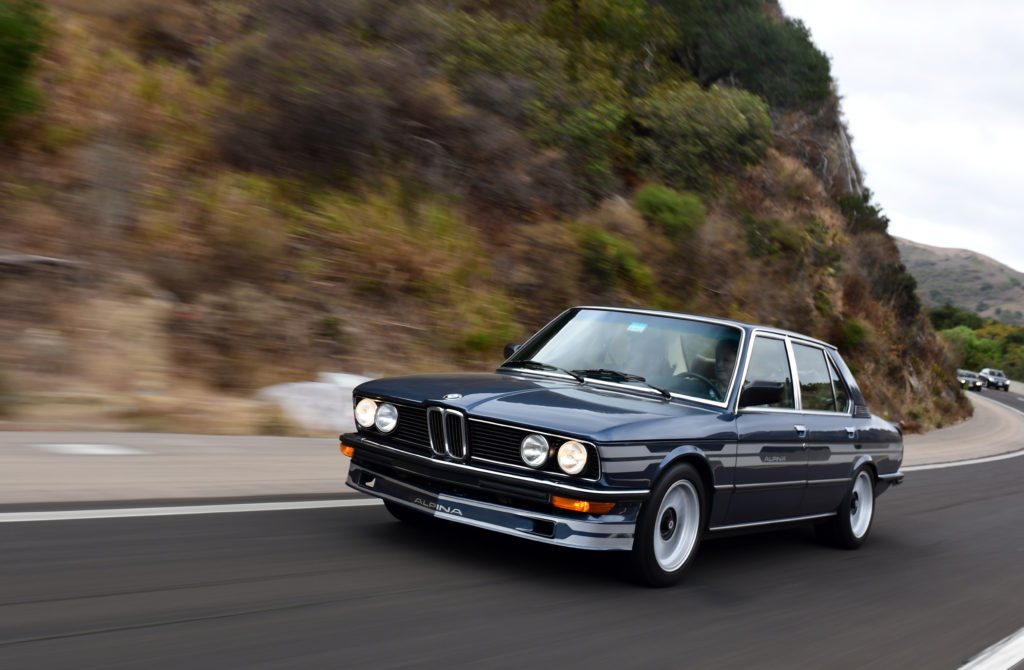
This doesn’t mean that they’re easy to capture and create, however. I checked in with five BMW CCA members who enjoy shooting rollers, got to hear why they enjoy taking them, and learned some tips. (And while we don’t know the details of the situations in which these included captures were made, we do recommend following all laws and safety precautions whenever in a moving vehicle.)
Who better to start with than a genius, right? Well, Hunter Dreier (IG: @hunterdreier) was a genius—a BMW Genius at Sterling BMW—but he was already an automotive enthusiast before that role. Since then he has also added Motor Trend to his resume. He’s also been shooting in general for six years, all before age 24. “I love shooting rollers because it captures action and requires dynamic composition,” Dreier explains, noting that it isn’t just pointing and clicking. “The biggest challenge with shooting rolling shots is finding the right environment,” he says. “Along with that, it isn’t always easy to find a street facing the right direction to get proper backlighting for the desired shot. But with the correct camera angle and lighting, I usually don’t need to do a lot of post-processing.”

Hunter Dreier captures Nima (IG: @nk7_s1000rrm) riding his BMW S1000 RR.
As you can see with this image, the energy captured in rollers is not confined to four-wheeled vehicles. “Of all the cars and other subjects, one of my favorite roller shots is the photo I took of my friend Nima on his BMW S1000 RR,” Dreier adds.
If you’re thinking of adding rollers to your repertoire, Dreier offers the following: “The best tip I could give to any aspiring photographer is to pursue your dreams, do all you can to learn from others, and make every connection you can to advance your hobby or career in photography.”
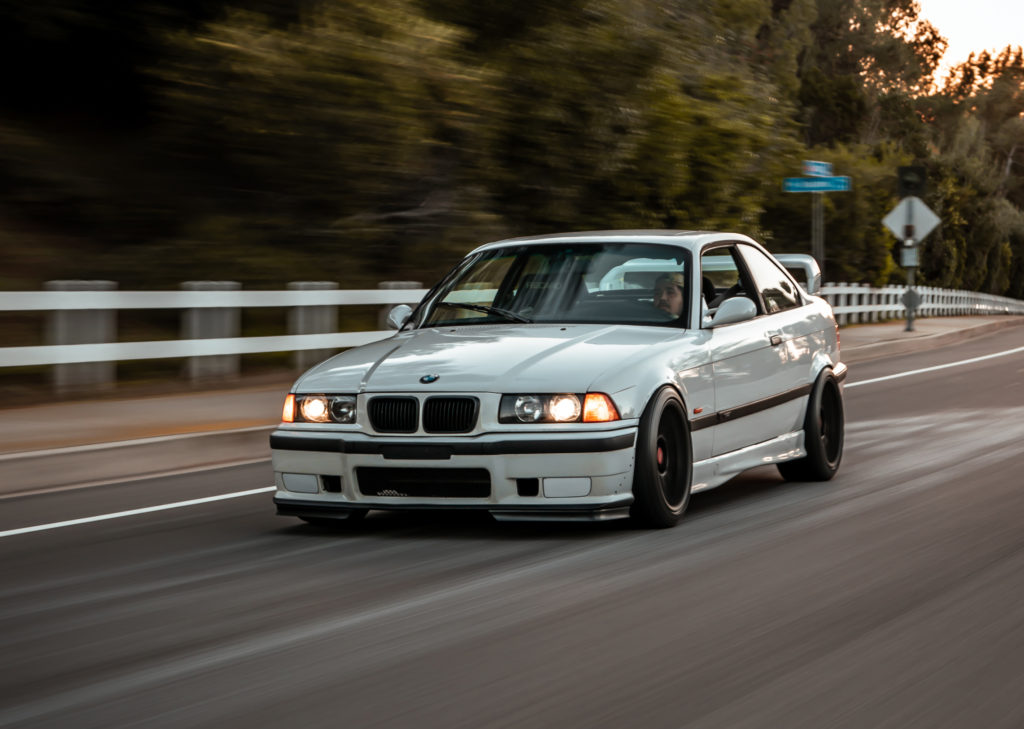
A frequent subject for David Guzman is his brother, Aaron Guzman (IG: @salsa_verde_e3x), captured here in his new E36 M3.
While Dreier has been shooting for about six years, David Guzman (IG: @dgmedia__) has been doing it for about six months—well, shooting in general for a year and rolling shots for half a year. “I started shooting E30s mainly because that’s what I was surrounded with. he explains. “I own an E46 coupe, but my brother has an E30. “I would say that rollers are my favorite type of shot because of the way they turn out: The movement can really enhance a car’s form. My favorite car to shoot has to be the E36 M3. It just looks mean rolling down the street!”
The equipment can make a difference, too. “I shoot with a Sony A7R II with a Sigma art lens,” says Guzman. “I use the A7R II because of the high-megapixel sensor, and I use the Sigma art lens because the colors the lens captures are insane.”
As with most things, however, it’s not just the equipment, but how you use it. “Two tips I would say are to have your shutter speed be similar to the speed of the car. For example, if the car is going 40 mph, I like to shoot at shutter speed of 1/40 of a second, and the other tip is to shoot during sunset when the lighting isn’t as harsh.”
That slow shutter speed can reveal great images, but it also presents some hurdles. “The biggest challenge shooting rollers for me is having to shoot when the streets are bumpy. You really notice bumps when your shutter speed is that slow,” Guzman adds.
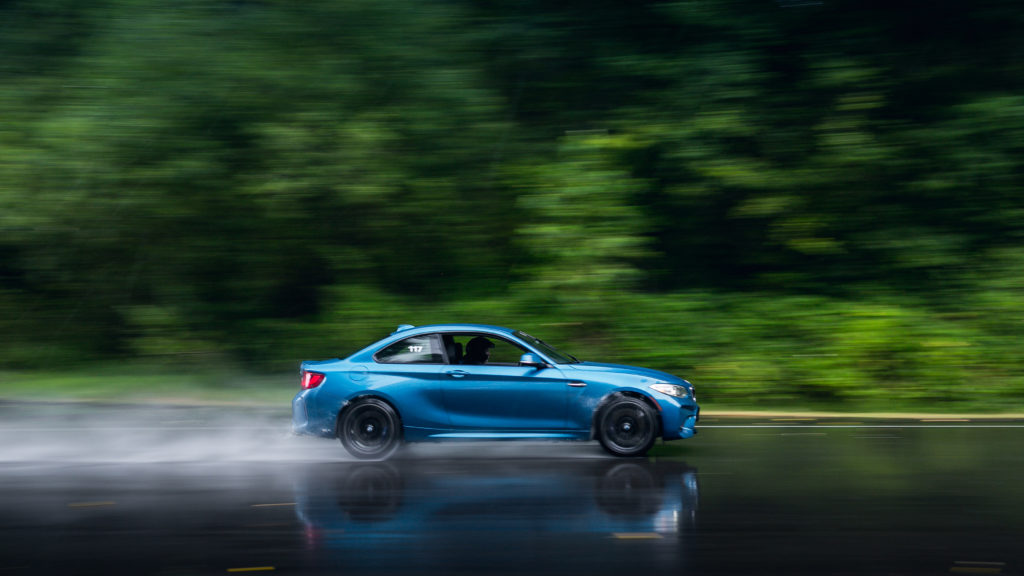
Christian Bouchez shows why weather can be an asset with a cool panning shot.
One way to eliminate the risks of bumpy roads is to not be on roads. A close cousin to the rolling shot might be the panning shot, where the photographer is stationary and the subject is at speed. Christian Bouchez (IG: @bouchezphotography) uses panning to capture a quickly moving car as it goes by him, moving the camera with the subject. “I love the motion that an image carries when capturing the moment,” Bouchez says. “Depending on what we’re looking for, you can freeze it or create motion with the camera settings.”
Bouchez has been shooting at tracks in his home state of Washington for fifteen years. and has found that some challenges tend to be greater than others—besides access to a track. “Weather conditions can be a challenge,” he says. “You are constantly fighting the elements—but this is often what helps create a really great capture.”
The weather can definitely help, but Bouchez considers shutter speed a main variable in achieving a good panning shot. “Shutter speed controls how much motion or speed you allow the images to capture. Panning with the subject will allow you to keep the subject sharp but the background blurry or in motion. Follow the subject using your steady body while you rotate with the subject’s movement. Using a monopod helps out considerably, too,”
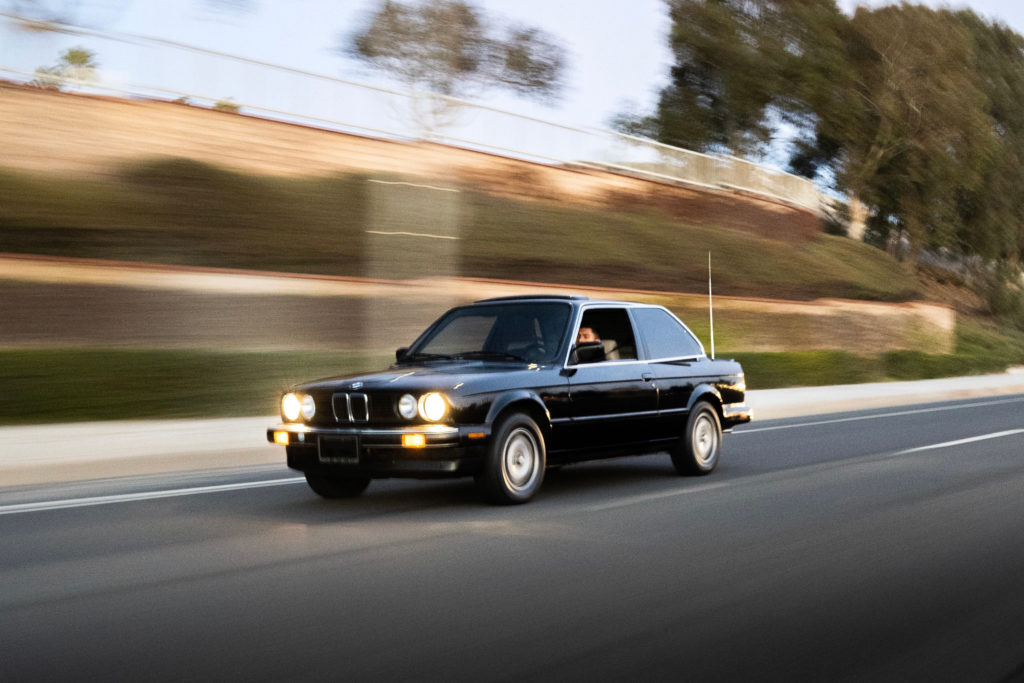
Matt Angwell captured a nice early model E30.
Steadiness is definitely a prerequisite for capturing good shots. Matt Angwell (IG: @angwell.projects) emphasizes, “You need steady hands! Nothing is worse for rollers than ending up with blurry images.” Angwell has been shooting for about four years and has a few other tips as well. “You actually don’t need to be going very fast for good rollers—just slow down the shutter speed. Composition and lighting are two variables that can make a great shot—or mess up a great shot.” To capture his own great shots, Angwell uses the Sony a7 III paired with a Zeiss 35-mm f/1.4 lens as well as a Tamron 28–75-mm f/2.8 lens. “That 35-mm lens is my go-to glass for its versatility and the sharp images it produces,” he says.
Some shots are enhanced with activity in the foreground or background. Most rollers, however, look cleaner with only the intended cars in the frame. “One of the challenges I find doing rollers is having to wait for that brief moment when other cars are out of the frame,” Angwell says. “Timing the subject car, the angle of the camera pointing out the side of the car, and the surrounding traffic are all challenges that make any roller outing even more rewarding when we get that shot.”
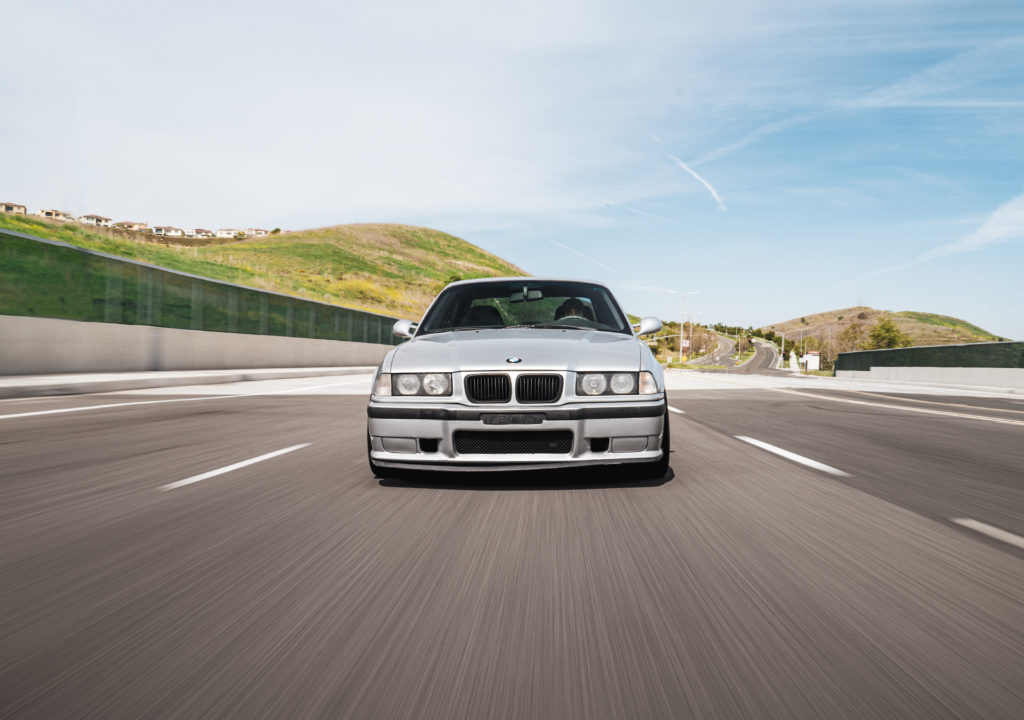
New BMW CCA member Brandon Chau captured member Dan Millwood (IG: @leftcoastcars) from behind the lead car.
One way to limit the challenges with shooting out the side of a moving car is to shoot out the back. Brandon Chau (IG: @boostedautophoto) has created a system to minimize risk while enabling him to all but eliminate many of the challenges others have cited. “Shooting directly out of the back of the car creates more of a flexible method of shooting rollers,” says Chau. “This allows me to move my body around to where I can shoot at a lower angle. Shooting out of a window on the side of the car can create limits of how far you can move horizontally while trying to capture the side or front or back quarter of the car. Also, it feels much safer than hanging out of the window.”

Brandon Chau employs safety gear even when shooting in controlled situations.
The definition of a high-quality shot is often in the eye of the beholder, but photographers do feel a sense of satisfaction when capturing a photo that exudes what they or their clients envisioned. “A good shot will always have the ability to tell a story and explain why a car is positioned in a location and what vibes are felt there,” Chau says. “I enjoy shooting rollers because it allows me to express how incredible these machines are. When you get to see fast cars actually looking fast in pictures, you can just imagine the feeling of being behind the wheel.”
The joke about everyone being a photographer until that M setting (that’s manual, not the BMW M) on the camera resonates clearly with rollers where managing shutter speed, aperture, white balance, and ISO all contribute to capturing a high-quality image. “The first and most important tip is to set the camera settings correctly in order to give you and your camera the best possible chance of focusing on your subject,” Chau says. “Also, get low so that you can emphasize the motion of the picture. Additionally, to all of the photographers on social media, remember to always shoot with passion, and do not get caught up in the numbers of social media. Nowadays, with social media’s algorithms and general struggles to be noticed, do not become content-driven and instead focus on the quality of how you tell your story through the lens.”
The rolling shot certainly adds a different dynamic to how we can see our cars. While shots of our parked cars are easier to manage, it is important to adhere to safety and legal guidelines and laws when involved in capturing rolling shots. Being able to shoot another shot is always better than getting that one great image.—Kyle van Hoften
[Photos courtesy Kyle van Hoften unless otherwise noted.]

